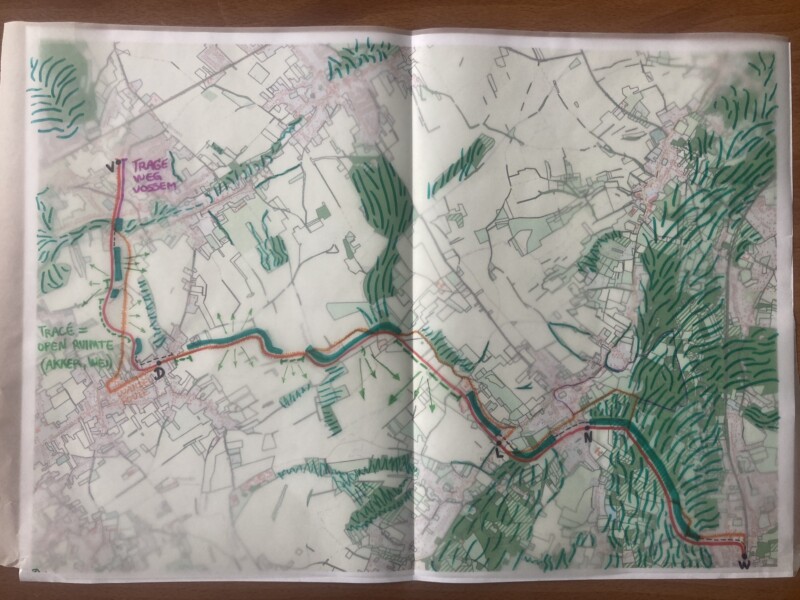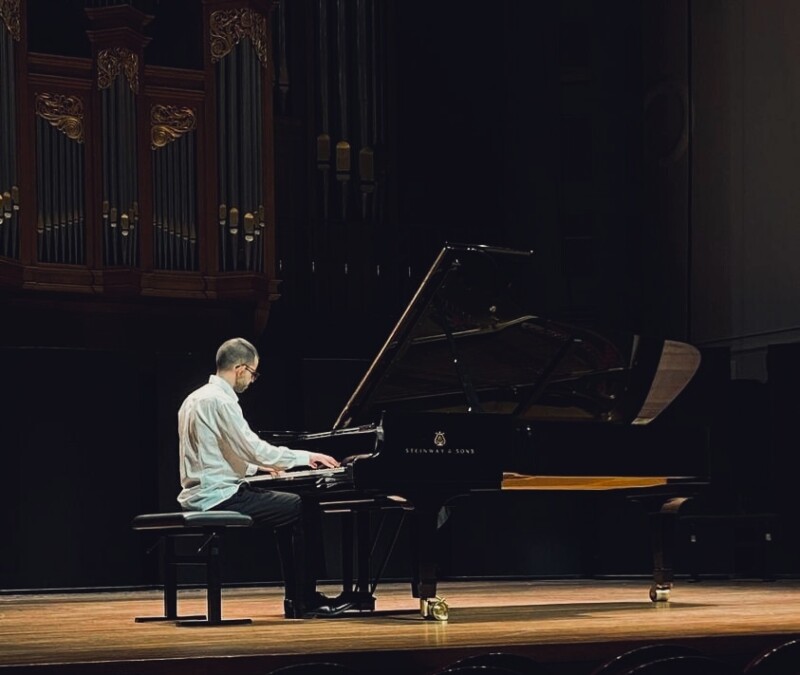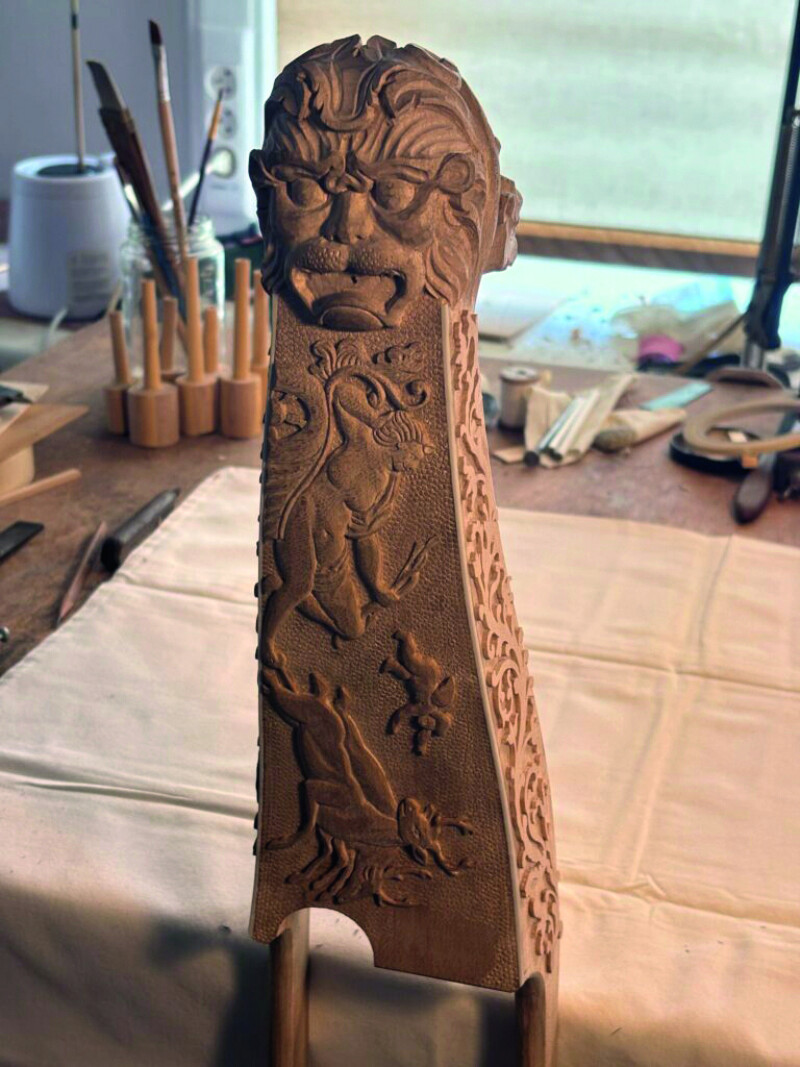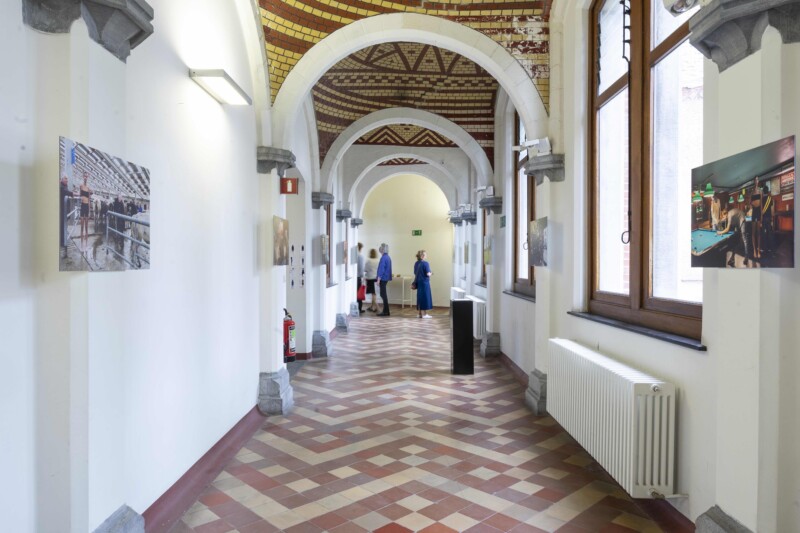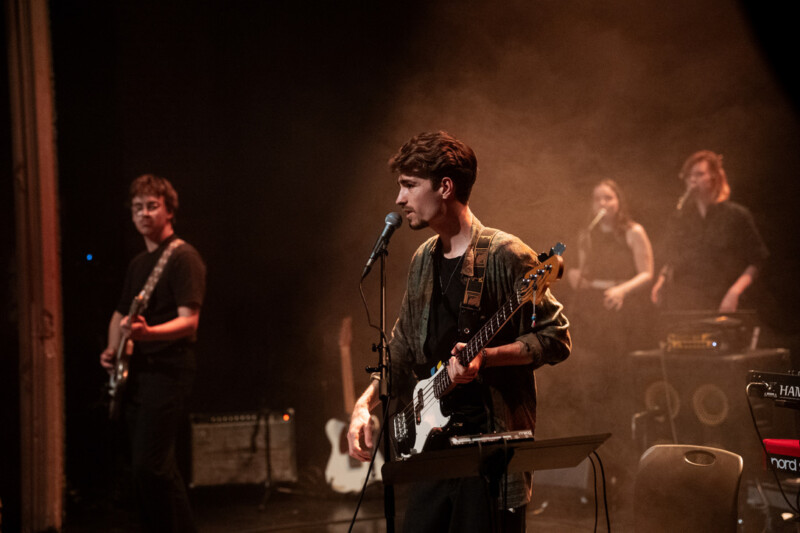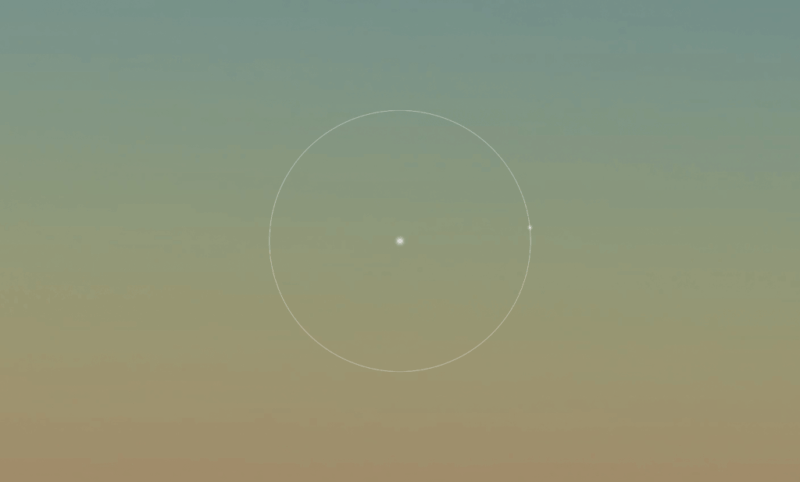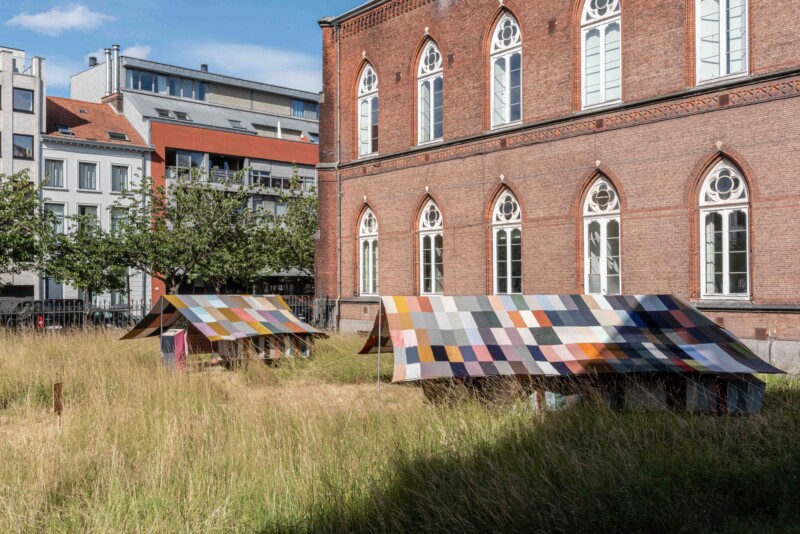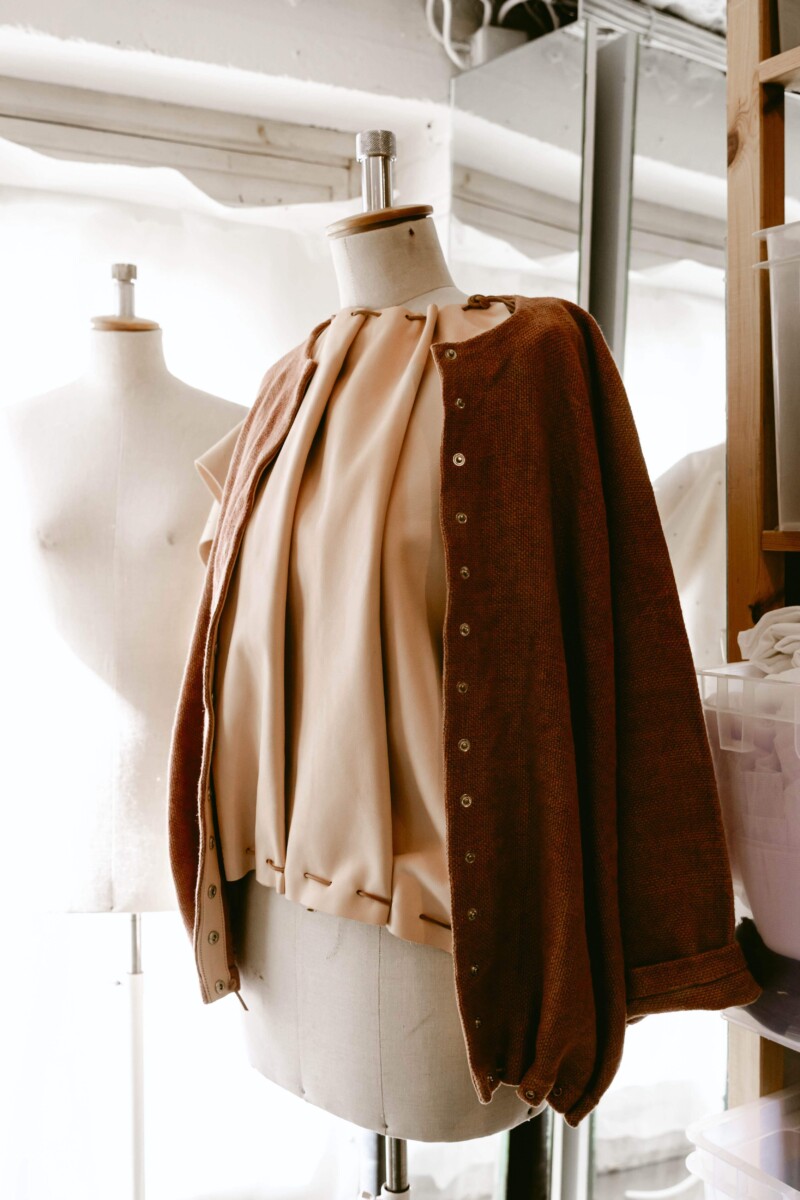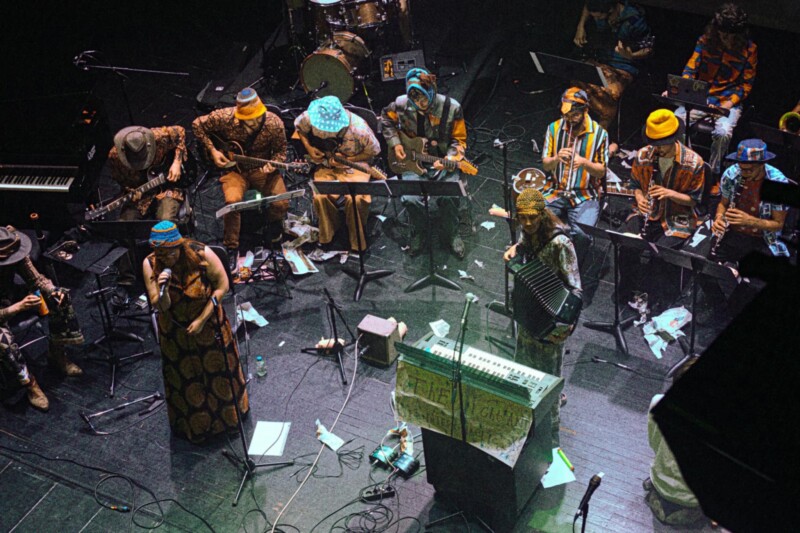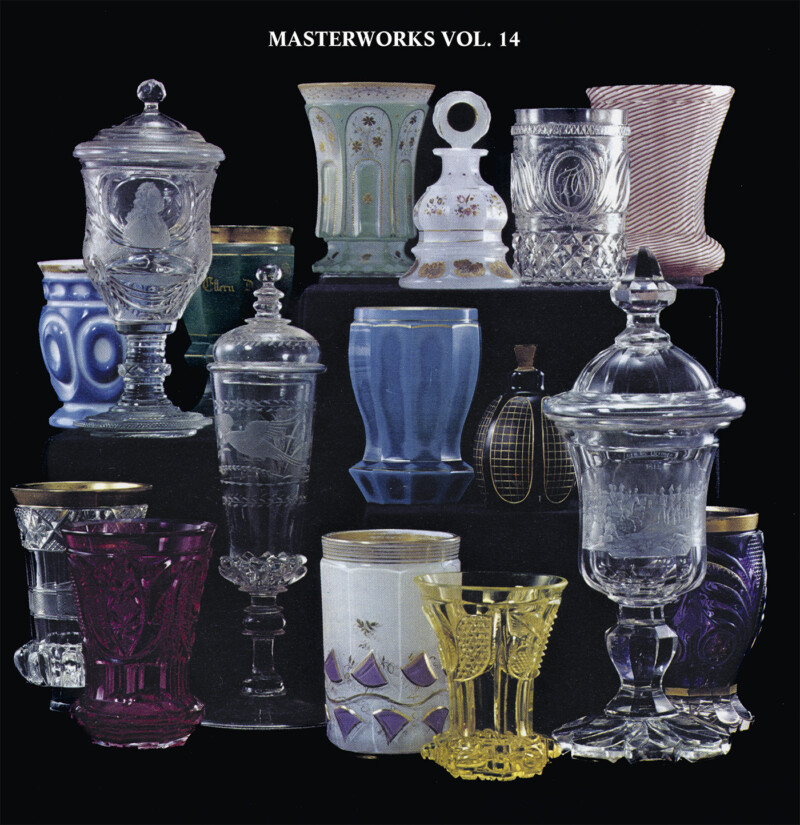Drama Masters 2025
This academic year, 18 graduating Master's students produced 10 Master's projects in the drama programme. However different they may be, as research-driven theatre practices they still bear the signature of the programme in one way or another. We asked two members of the external jury, Evelyn Coussens and Simon Van Schuylenberg, what trends they discern in this hybrid collection of theatre performances.


Simon Van Schuylenbergh
First of all: text is back! It is striking that,
compared to previous graduating generations, text as sign is given a more
central role. Although there are exceptions to each of the trends I see, in
this case Echo Beach (Arthur Loontjens), a strictly
visual performance.
Evelyn Coussens
It fits in with a renewed desire for narrative
that we also see in professional theater. I think it’s linked to a search for
greater accessibility and legibility. I think that audience awareness,
including among many of these graduates, is a positive development (although we
need to be careful that it doesn’t go too far). A performance such as Lost & Found and lost again (Robbe Meere) consciously opts for
audience-oriented theater with a narrative performance on location.
SVS
The choice of youth theater may also fit in with
this desire for accessibility. Two performances explicitly present themselves
as children’s or youth theater: Drs.
Apparatus (Evert Van
Ransbeeck & Felix Braeckman) and ik
denk dat het ouder heet (Mira
Cole, Seppe Somers & Robbe Embrechts). I
Love (And Hate) You, Belgium (Armin
Mola) wants to be ‘as democratic as possible’. At the same time, focusing on
identification often goes hand in hand with makers who zoom in on themselves.
This is perhaps typical of ‘Gen Z’: the revolution against yourself rather than
against the world. I wonder if that is necessarily a good idea.


EC
For me, this ‘introversion’ does not prevent makers
from explicitly relating to society. In Autumn
Rupture (Ella Boomsma &
Leila Benchorf), Echo Beach or MODDER SPEAK TO ME (Maryam Sserwamukoko, Titus
Smessaert & Tijmen Van Damme), issues such as ecological collapse, feminist
struggles or discrimination shine through. It is perhaps characteristic of
today’s makers that they view the world from a personal perspective. The very
personal I Love (And Hate)
You, Belgium points to a
universal issue concerning people with a migrant background in a society that
constantly questions their right to exist. The makers of ik denk dat het ouder heet transform their own experience of
absent fathers into a children's show that seeks to rethink parenthood. There
have been generations that were highly politicised and generations with work
that was very inward-looking – this generation hovers somewhere in between. The
political is ‘metaphorised’ rather than explicitly represented.
SVS
This is truly a generation of performers who have
sought to work independently of hierarchy. Performance dramaturgy is considered
more important than, for example, production dramaturgy or direction. This is
interestingly at odds with the desire for accessibility: rather than being
constructed ‘from the audience,’ the performance is built from the performers
on stage. Amor Fatigue (Miro Lievens & Nathan
Isahakyan) and Autumn Rupture each feature two performers who
explore embodiment and imagination through highly personal performance
impulses.


EC
This also brings us to the importance attached to collaboration.
SVS
Whereas collaboration among a previous generation of theatre makers was driven by internal tension and conflict as a drive for performance, tension among this group more readily leads to ‘safer’ choices. Who we are today, our differences and privileges, are fuel for heated debates. Bringing those differences to the stage requires mature, well-considered choices. You don’t do make those at the end of the process, but embrace it from the start. These students seem to want to do that, which is very positive, but it can mean you miss out on making sharper artistic choices.


EC
I find it almost more interesting to look at how young people work today than what they bring to the stage. This also contains an invitation to the professional field. During the jury discussions, you can sense how much they struggle with this collaboration. Certainly at the end of the process, there is a need for someone to make decisions – a return to ‘authority’. Fortunately, this does not take the form of an authoritarian director. For me, the solution lies in the figure of the dramaturg as a process supervisor. Rather than having someone who has to fix a number of things at the end of the horizontal process, a good dramaturg is someone who guides the tension you talk about, Simon, and makes it work.
SVS
It is striking that My Nemesis (Manizja Kouhestani) is a performance
that was created entirely without a dramaturg or director, yet it is the most
coherent and dramaturgically strong. This is probably because it is driven by a
dialogue between two fictional feminist performance artists on stage – this
form automatically creates a tension.


EC
How do these students relate to the work of other makers?
SVS
I saw many ‘children of’, sometimes quite
literally, in the case of Housewarming,
where Kes Bakker and Anna De Graeve explicitly mention how the work of their
theatre-making parents has influenced them.
It is notable that the interaction with the visual arts, both in terms of form and in the way makers place their theatre work in a broader art-historical context, is less prominent. In ‘my day’, we were less concerned with the medium of theatre or theatre plays alone. The aim then was really to create an autonomous language – a very distinct artistic language that could not be compared to others. This was, of course, in keeping with the offshoots of post-dramatic theatre, in which aesthetics were paramount. That seems less relevant now. Echo Beach and My Nemesis are, in my opinion, the exceptions to this.
EC
In terms of form, this generation once again
offers a particularly beautiful palette of different ways of performing, from well-made plays to textless theatre, from monologues
to location theatre, from mime to stand-up comedy. I really sense a search in
this generation for the best form to capture their content.
text: Frederik Leroy







